
Mahogany coffered ceiling: It seems nothing can surpass the luxury of carved fine woods. Great homes and halls of history relied on the rich and royal visual weight that beautiful woods imparted to walls and, even more lavishly, to ceilings. Modern contractors have faced the loss of the artisan availability, and also sadly, the ecological reserve for installing such opulent and timeless creations. Our studios however, have devised a technique of replicating woods that not only brings this treasure back to availability, but also preserves the natural resource as well. Extruded styrene foam, a rich faux wood grain, and careful fine carpentry skills are the foundations for this enticing substitute.
Stone tile bath: The original bath was a bit of a challenge. Previous owners had plastered over four-inch square tiles and the bull-nose trim tiles of the wainscot creating a smooth surface that rounded over on the top edge. Over this was attempted a faux Venetian plaster in orange. The walls above the resurfaced wainscot and the ceiling were painted aqua. The only saving grace was the lovely large stone tiles in the bath/shower and on the vanity counter. These became the target match to which the new wainscot and bull-nose were painted, and the results are ... well, folks who go into the room say they see no ‘faux’ finish. Ha!
Design
DOUG DANFORTH
FAUX
FINISH
PORTFOLIO:
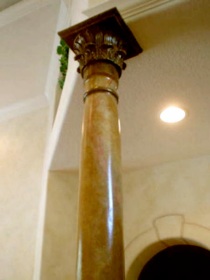
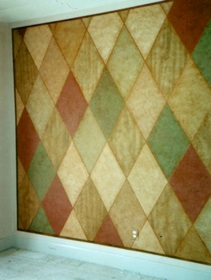
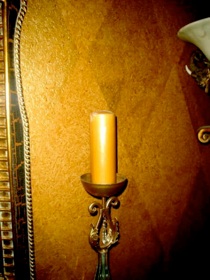
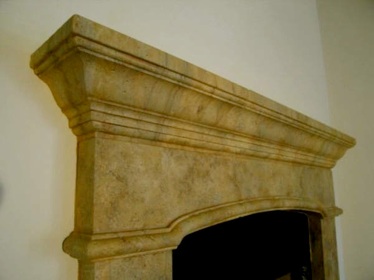
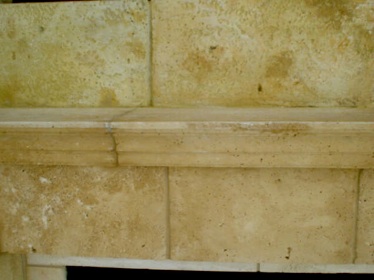
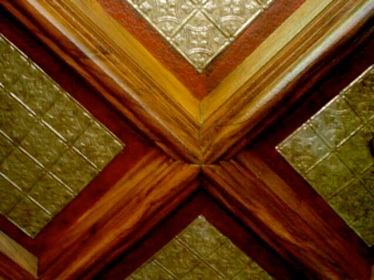

Entry columns: Saying ‘welcome’ is articulated in many fashions. Originally these columns were painted white, along with the rest of the trim. The decision whether a grand and graceful feature such as these would be classified as ‘trim’ or as ‘focus’ was not a difficult one. The room was light and spacious, therefore installing a rich yet understated faux moss agate column with bronze accents was a perfect decision. The colors work flawlessly with the room, and do not compete with – but enhance – the homeowners’ personal furnishings and art.
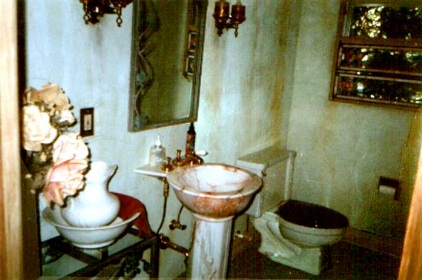

Italian guest bath: The bath presentation prior to this was mired horribly in the eighties, with Mylar wallpaper, dark brown floor tiles and a cultured marble ‘shell’ sink and countertop. Removing the plastic wallpaper destroyed the gypsum board surface, so colored plaster was hand-applied over to appear as aged and warm. ‘Stains’ and other offsets in color added to the illusion. The tile was removed revealing a plank mixed with plywood floor under. That was all faux painted in black marble ‘tiles.’ The crown molding was added, and faux painted to match the real marble pedestal sink that replaced the vanity.
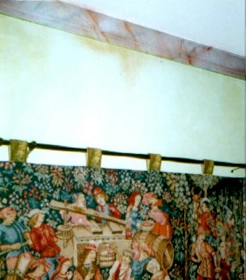
Peach marble column: Existing as a support column on the ground floor of a five-story building downtown, this immovable edifice was a force to be reckoned with. Sitting mid-room, the only recourse was to ‘play it up.’ The ceiling line of the room was brought three feet down, by use of styro moldings and column cap, and all was finished to encourage the idea that a fine marble column with its hammered bronze capital was imported and installed here in this retail space.
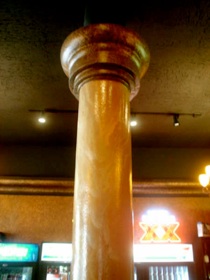
Harlequin diamond headboard wall: Against this wall will dwell a wonderful hand-carved antique headboard.The colors of the room will rest in the room’s fabrics, but this focal wall shall be the only painted connection to those colors. All the diamonds are related to one another in that each color is mixed into all the others to some degree. They are all finished to resemble leather and suede, and finished with faux aged copper inserts between the shapes as well as surrounding the whole. Even down to the outlet cover.
Diamond entry wall: Another example of how diamonds work on a larger scale is this entry wall, where the diamonds are only demonstrated by a very light wash of gold, and then the whole is glazed over as leather. From some angles, the diamonds are not visible at all, only when light catches them. The gentle beauty is in the understatement.
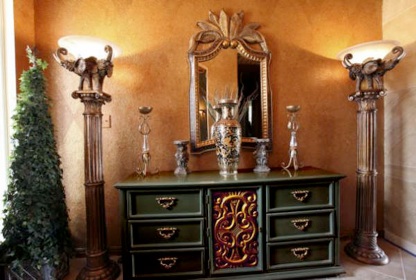
Aged bronzed dining: With twenty-foot heights, this room allows a dark and strong statement on its ceiling. The finish is bronze; yet conveying the rich metallic feel without utilizing a strong sheen was the goal. Because of the concave nature of the surface, too high a reflective surface and the concealed lighting would have echoed back. The successful finish reads as hammered patinated bronze, and the statement ‘vortex’ at the base of the light creates the light medallion and an artistic flair all in one.
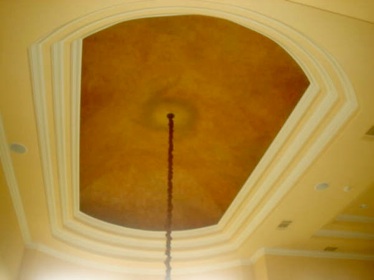
Rain forest mahogany door: Some beautiful exotic woods are no longer available, and if they are, they shouldn’t be. I’d much rather recreate these woods than ever think of being a consumer of such endangered species. This door was originally white; and with a couple of days’ work, it was transformed from an ordinary door into a rare and lovely access.
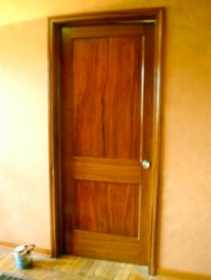
Living room fireplace: A central living room, with kitchen, bedrooms, library and baths radiating around this one space.The access to each of those other home areas were accented by real stone columns, but the fireplace was not stone, it was a molded and formed man-made material similar to a polymer concrete, but with a white surface. The request was to match the other stone in the room, and no one has ever guessed it’s not real.
Great room stone arch: Between the kitchen and great room exists a wide-open arch, and the homeowner wanted a period Italian feel, with blocks of stone intended to match the real stone fireplace in that room. The fireplace resides opposite this arch, surrounded by rich leathery walls. This wall was created of plaster masked to create a ‘mortar reveal’ between each stone, then finished in a subtle monochromatic rendition that is matching, but subtle.
Fireplace mantle: Having a lovely new cantera fireplace mantle, the homeowners desired to have that same stone sense rise all the way up the wall. The surface texture is almost more important that the color. Getting the color match was a cinch comparatively, as making the correct texture match required several sized drill bits, a hole set, a carving knife and scraper, sheets of sandpaper ... and many hours. This picture reveals real stone and a fabricated stone; can you detect which is which?
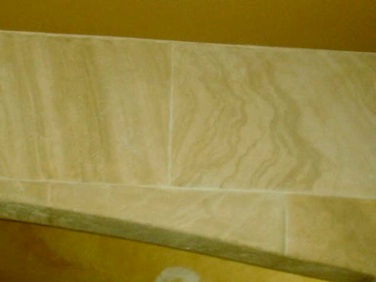
Site Photo Credits: Danny Warner, Carlos Flannery, Andrea Heitke, Doug Danforth.